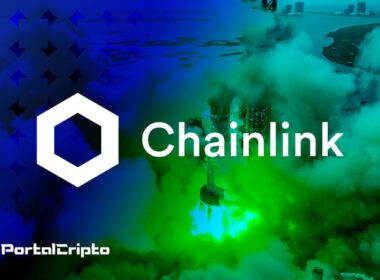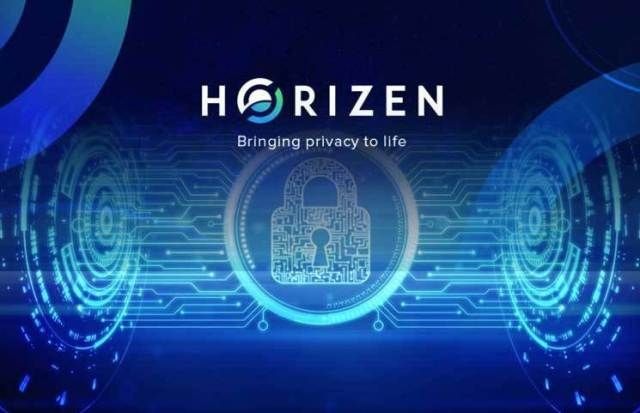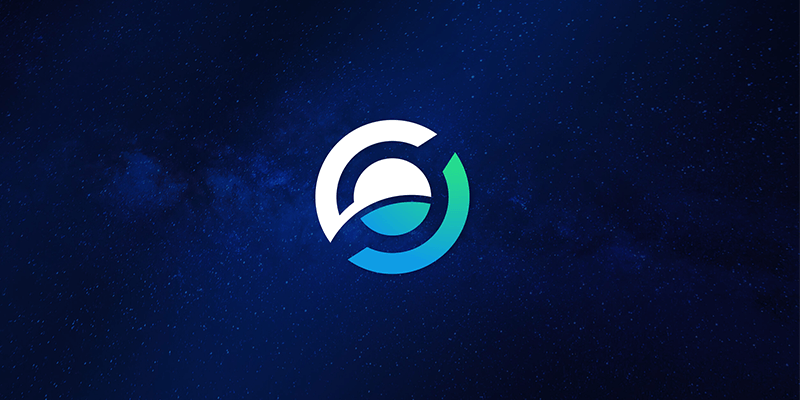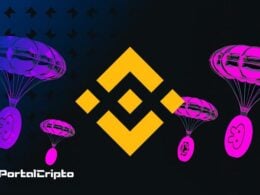Horizen Mainchain and Proof-of-Stake (PoS) Sideways Solutions Zendoo, Horizen is bringing innovative opportunities to blockchain developers. In addition, a key gear in the mechanism is the Horizen coin (ZEN). Additionally, native ZEN currency appears in different forms across Horizen's cryptographic ecosystem.
The ecosystem of blockchain Horizen presents new solutions for scaling blockchain infrastructure. Combining a proof-of-work (PoW) mainchain Horizen and a secondary proof-of-stake (PoS) solution “Zendoo”, Horizen is bringing innovative opportunities to blockchain developers. Furthermore, a key aspect of the mechanism is the Horizen (ZEN) coin. Additionally, the native ZEN coin appears in different forms throughout the Horizen crypto ecosystem.
In this article, we will discuss:
What is Horizen Blockchain?
Blockchain expert Rob Viglione is CEO of Horizen Labs, a blockchain development technology company, and co-founder of Horizen, an interoperable blockchain ecosystem. Incorporating the innovative technologies of Horizen Labs, Horizen's blockchain ecosystem operates on a four-tier stack using revolutionary scale solutions.
Starting at the top, the first tier of Horizen's cryptographic ecosystem accommodates a variety of decentralized and open source applications (dApps) . By hosting a variety of enterprise dApps, Horizen technology allows companies to design their own custom blockchain applications, incorporating both public and private capabilities. This in turn helps protect the integrity of user data.
The second tier of Horizen's block stack consists of revolutionary side chains, providing an easy-to-navigate development landscape for programmers. Blockchain developers can take advantage of the open source software development kits (SDKs) available to design and deploy decentralized applications (dApps) and creative, interoperable blockchains. The project's mission is to bring real-world utility to blockchain dApps with minimal effort using powerful development tools. Branded as the “Zendoo” sizing solution, the side chain operates differently from other side chains in the industry. Developers can use these side chains to deploy their apps. We'll discuss this in more detail later in this article.
The third layer is where the sidechains connect to Horizen's public backbone. Using a proof-of-work consensus (PoW) algorithm, the Horizen public mainchain is a robust and interoperable product and design of Horizen Labs. The native currency Horizen (ZEN) is responsible for ensuring the smooth running of operations on the blockchain. In addition, the ZEN coin is tied to the fourth and last layer of the stack. ZEN purses can support the base of the network by becoming Horizen nodes. With nearly 50.000 active nodes at the time of writing, the project hosts the "largest and most distributed network of multi-tier nodes".
What Makes Horizen Unique?
Horizen uses a sidechain architecture that can open up a multitude of possible real-world use cases. This cross-chain transfer protocol allows for decentralized sidechains. There are separate blockchains that are tied to the parent blockchain and that can run concurrently.
Horizen's mission is to empower people and bring them together through the process of building an inclusive ecosystem, in which everyone can be rewarded for their contribution. Zendoo is a decentralized and customizable sidechain solution used to overcome current limitations regarding blockchain scalability and extensibility. It is a feature-enhanced parallel platform that allows you to deploy public and private blockchains at scale, and the SDK provides the components needed to build a decentralized blockchain.
ZEN Token
The Horizen crypto ecosystem could not function without the Horizen coin (ZEN). The ZEN coin has multiple responsibilities as well as rare utility functions. The native Horizen coin allows token holders to control their digital footprint with two types of addresses. Firstly, “T addresses” provide a public history of all ZEN currency movements. This is similar to any regular public cryptocurrency. Second, the project offers “Z addresses”. These are sometimes referred to as “shielded addresses” as they are private.
With state-of-the-art security incorporating zero-knowledge technology, Horizen gives ZEN coin holders the ability to secure transaction information. This can include the quantity shipped, the sender and recipient addresses. In addition, secure addresses also provide privacy about account balances. However, if a shielded address sends funds to a common “T address” or public wallet, the amount received will become public on the network.
The goal of Horizen's cryptographic ecosystem is to make it simple to use and accessible for everyone, with real-world usefulness in mind. As such, the project values the ability of ZEN coin holders to spend their assets on off-network goods and services with complete transaction privacy. To make ZEN coins more affordable for payments, Horizen partners with many popular digital payment providers.
Similar to Bitcoin (BTC), the Horizen coin (ZEN) has a maximum supply of 21 million coins. According to the project's website, the ZEN coin has a circulating stock of just over 11,7 million at the time of writing.
tZEN Coin
An additional form of ZEN currency available in the Horizen cryptographic ecosystem is the “tZEN” currency. The “tZEN” currencies are the project's test network currencies with zero value. These coins exist for developers to use in testing and experimenting with applications on the platform. In addition, ZEN currency and tZEN currency are completely separate. That said, tZEN currency operates the same utilities as ZEN currency on the test network. However, tZEN currencies and ZEN currencies cannot be exchanged, and tZEN currencies cannot pay for any service on the network.
ZenNodes
Horizen Coin (ZEN) holders can choose to make a passive income with the Horizen blockchain ecosystem supporting the network. Becoming a “ZenNode” is completely disallowed with non-discriminatory requirements. ZenNode candidates must first go through a verification process to ensure they are practically equipped to meet the level of commitment that the project expects.
With the largest network of multi-tier nodes in the blockchain industry, ZenNodes is responsible for securing and verifying Horizen's public backbone and other secondary chains. Furthermore, the global distribution of active ZenNodes dramatically improves the platform's speed, reliability and scalability. ZenNodes maintains a real-time copy of the blockchain ledger and is typically run using Horizen's central node software. Also, ZenNodes must be reachable via an IP address. Furthermore, ZenNodes can be divided into two categories: “Secure Nodes” and “Super Nodes”.
At the time of writing, Horizen claims to have 43.838 active insurance nodes in its network. Responsible for enhancing functions beyond regular nodes or “masternodes”, Horizen secure nodes facilitate the decentralization and point-to-point (P2PE) encryption of the Horizen cryptographic ecosystem. P2PE has the credit of the “PCI Security Standards Council” and a more straightforward and compliant structure than end-to-end encryption (E2EE). Secure nodes must wager a minimum of 42 ZEN coins and ensure that their own sufficient computing power can meet processing and memory requirements with at least 92% uptime.
Horizen Super Nodes increase the speed and reliability of the Horizen Zendoo side chain. With more than 4.200 active nodes, this function requires more computing power and storage, as well as a significantly higher stake. In addition, nodes must have at least 96% reliable uptime. Super Nodes must wager at least 500 ZEN Coins. In addition, Super Nodes and Secure Nodes receive 10% of the block rewards proportional to your wager, paid weekly to your public wallet address.
zendoo
As one of the project's unique selling points, Zendoo is a revolutionary side-chain blockchain sizing solution. A phrase that many call “the blockchain trilemma” involves the difficulties and trade-offs of blockchain development between speed, security and decentralization. Most tier 1 blockchains opt for security and decentralization. This in turn presents an opportunity for Layer 2 solutions to operate on top, or in the case of side chains, in parallel, of the main blockchain. Zendoo leverages the Horizen cryptographic ecosystem from a network of cryptocurrencies to a secure, scalable, and interoperable platform for enterprise use.
A unique element of Zendoo is the complete decentralization of the sidechain infrastructure. Native ZEN coin feeds the side chain, while Super Nodes underpin the security and reliability of the Zendoo. Furthermore, the Zendoo sidechain model refrains from interacting with third parties and offers a modular structure. Architectural modularization favors functionality over design, offering almost unlimited scalability and flexibility over design choice. Furthermore, the use of a modular protocol means developers can seamlessly integrate application updates with minimal or no disruption.
Zendoo's sidechain leverages zero knowledge technology for interaction and verification between the sidechain and the Horizen mainchain. Furthermore, this is “without knowing the internal structure of the sidechain”. Developers can use the Zendoo SDK (software development kit) to create decentralized privacy-preserving applications (dApps) that are fully auditable. The Horizen cryptographic ecosystem offers Zendoo sidechain solutions as the space for companies to implement affordable and interoperable dApps.
Cross-chain transfer protocol (CCTP)
Zendoo's sidechain framework and its software development kit ( SDK ) come with everything a developer might need when designing and deploying a blockchain. Using the Proof of Bet (PoS) consensus mechanism, developers have full flexibility over the network layer, history, and wallet implementations in their chains. All the tools and components developers might need to build a blockchain, Horizen provides in one convenient location. This allows developers to deploy applications faster, allowing Horizen to perform all low-level tasks under the hood.
The Zendoo Cross-Chain Transfer Protocol (CCTP) is a custom design for frictionless compatibility with the Horizen blockchain ecosystem. However, CCTP can also be customized for other blockchains. Zendoo's main function is to facilitate secure transactions between chains with complete decentralization. Also, this should be done in such a way without “requiring mainchain nodes to track a sidechain to verify them”.
Ginger Lib
As the project's privacy solution for developers, Horizen's “Ginger-lib” features a new versatile all-in-one toolkit and zk-SNARK library. Additionally, Ginger-lib is Horizen's pioneering contribution to the global zk-SNARK movement. Ginger-lib allows developers to employ select privacy features within their blockchain and apps.
Popular new additions to the library include the “MNT6-753” and “MNT4-753” elliptic curve cycles, plus all the devices, fields and primitives needed to support “full recursive proof composition”.
Horizen Developer Environment (HDE)
Another key element of Horizen's blockchain ecosystem is the “Horizen Developer Environment” (HDE). HDE is an all-in-one space for developers to find tasks, collaborate remotely, and interact with other developers. Until now, there was no single community platform for networking, development opportunities and communication with teams. Also, without using HDE, developers must use multiple platforms and websites to search repositories and understand and create project structures. Also, developers often require another application for communication between the parties.
HDE presents a solution that bundles and facilitates all the services and functions developers need to find, contribute and earn rewards for collaborations on open source projects. HDE aggregates open tasks on GitHub and other tasks from different repositories on a single platform. In addition, developers can use the search and filter functions to find tasks they like the idea of contributing to.
At this stage, the HDE identifies all the relevant information and contributors needed to complete the task. Developers can access a wide variety of educational resources along with networking on the social side of the platform to collaborate with developers from around the world. In addition, HDE gives developers the chance to work alongside the Horizen engineering team.
Horizen wants to work with innovative developers and generously compensates for quality contributions to rewards. There are several reward programs available using native GitHub labels to open a new reward. In addition, the project's rewards payment policy means that rewards encourage and reward contributions to the platform.
In addition, HDE also lists non-technical tasks identified with a special “No Code” tag. This gives non-programmer cryptography enthusiasts the opportunity to join the Horizen cryptographic community and earn rewards.
Horizen Early Adopter Program (HEAP)
Horizen's cryptographic ecosystem also compromises the “Horizen Early Adopter Program” or “HEAP”. HEAP gives project enthusiasts the opportunity to gain early and exclusive access to the latest platform features and products before going live to the public.
HEAP allows developers to share their ideas and help shape new platform releases. In addition, HEAP registration will automatically invite developers to pre-release product demos and HEAP-only webinars.
What is the Price Forecast for the Horizen cryptocurrency (ZEN)?
Horizen's price is forecast to peak at $128.03 throughout 2022.
As early as 2023 according to our crypto price prediction index, Horizen (ZEN) could reach a maximum level of $246.38, with the average trading price of $183.22.
By 2025 according to our crypto price prediction index, ZEN should cross an average price level of $297.02. The minimum expected price of Horizen at the end of the current year should be $274.26. Additionally, ZEN can reach a maximum price level of $302.71.
Where to buy the ZEN token?
The ZEN cryptocurrency can be traded on the following exchanges:
- Binance
- OKEx
- CoinTiger
- Huobi Global
Conclusion
Horizen's blockchain ecosystem expands on the developments of Horizen Labs. As a scalable and versatile protocol, the project itself hosts many elements in its multi-layer stack and cryptographic ecosystem. In addition, native ZEN currency is crucial to the project, acting as fuel for the Horizen blockchain.
Horizen offers Zendoo as an innovative scaling solution, giving developers the opportunity to design and deploy decentralized applications (dApps). Additionally, developers can choose privacy features for dApps as a way to protect user data. This allows developers to build an application by combining public and private resources. In addition, the project hosts the “Horizen Developer Environment” (HDE) as a “one-stop shop” for finding work and collaborating with other developers.











